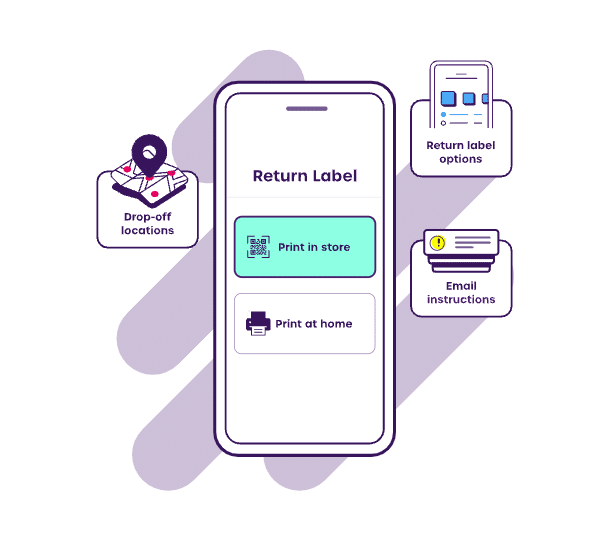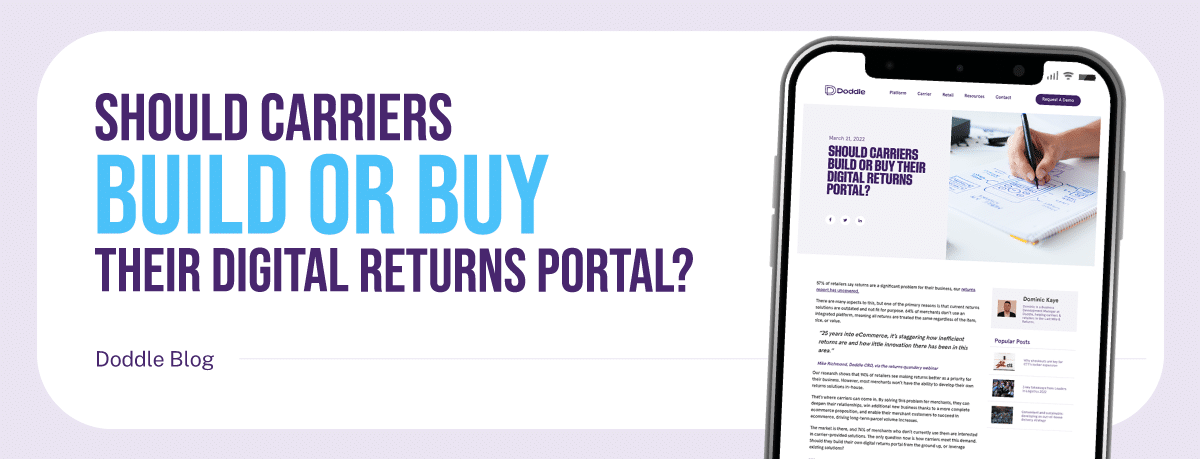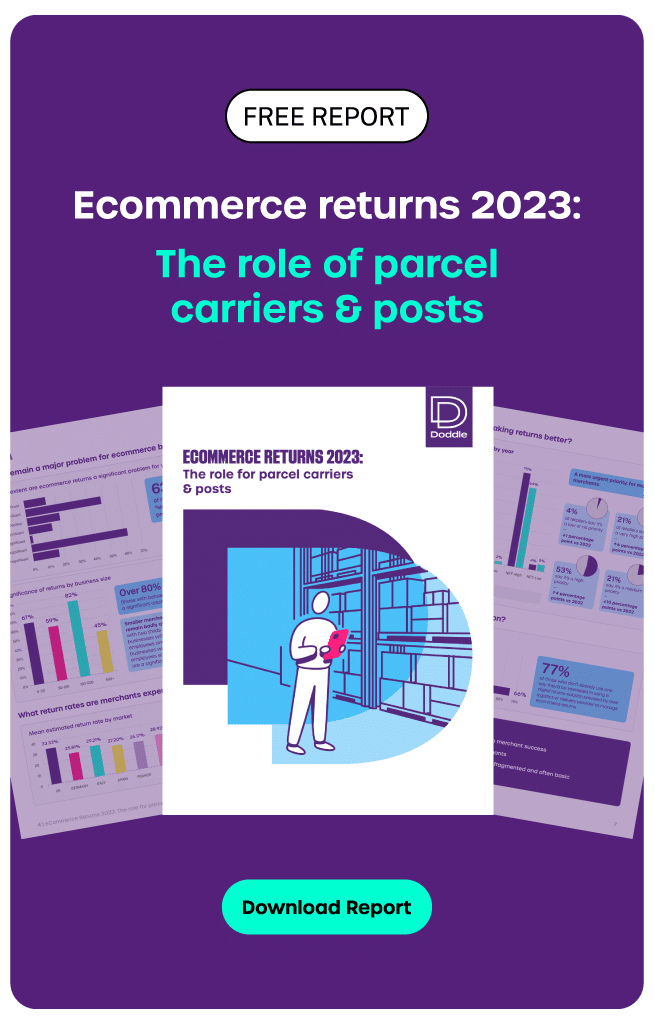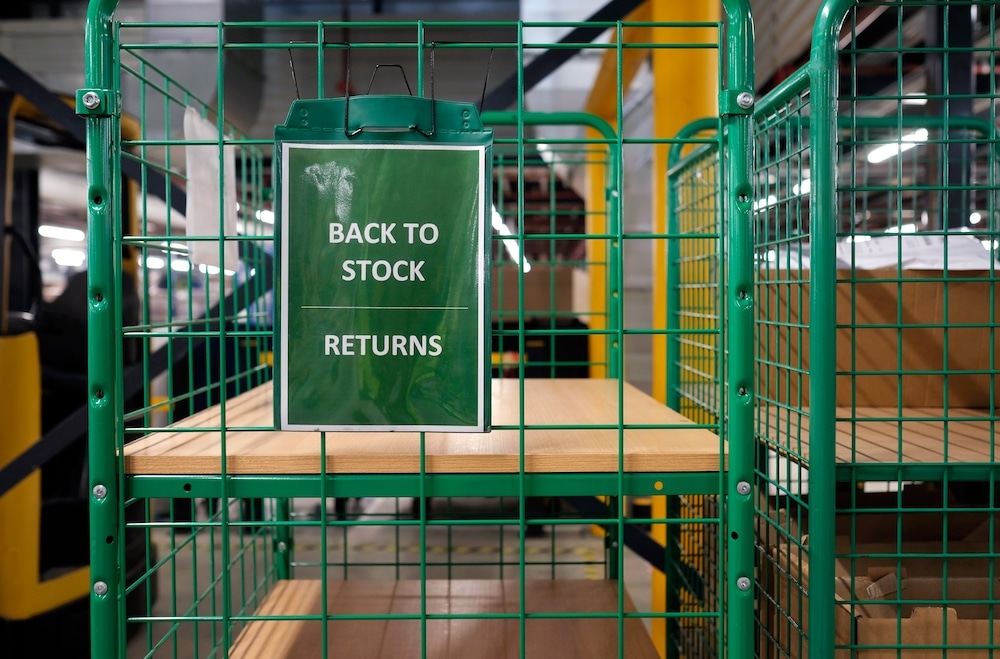Insight / Blog
Speedy refunds: creating happy customers through fast & effective returns

Summary: Find out how speedy refunds can recapture revenue, increase customer loyalty and boost lifetime value.
Returns are one of retailers’ biggest problems in today’s ecommerce landscape – with 63% of merchants saying it’s a significant problem for their business. Without effective returns strategies, retailers are experiencing increased costs thanks to processing, sorting and restocking returns – all while damaging the customer’s experience of the brand and increasing their churn rate.
However, with effective returns management, returns can become a secret weapon for retailers, helping them recapture revenue, boost customer loyalty and increase lifetime value. One of the key components to an effective returns solution is through speedy refunds.
The damage of slow refunds
One study revealed that 52% of customers would not be likely to shop with a particular retailer again if it takes too long to process a refund. Similarly, a TrueLayer and YouGov study revealed that two-thirds of shoppers consider refund processing time an important factor on whether to shop with your business again.
From a customer’s point of view, this makes sense. You’ve bought an item, waited for it to arrive, and when you receive it, it lets you down somehow. No matter the return reason, all that matters is that you want a resolution by getting your money back. But before you can get a refund, you need to go through the returns process. That could involve speaking to customer service, repackaging items, printing a label, and posting it back to the retailer… all of which means more inconvenience, and more time spent. If a retailer doesn’t offer free returns, this is also more money spent. At this point, disappointment and annoyance have replaced any feel-good buzz you got from shopping in the first place. That makes waiting weeks for a refund feel like salt in the wound and implies a lack of trust on the part of the retailer, and it extends the period of irritation for the customer while they’re out of pocket.
Rather than letting these negative returns experiences build up for customers, offering fast refunds can create a positive returns experience, keeping your customers happy, increasing loyalty and driving future revenue.
Effective returns orchestration lays the groundwork
To offer customers faster refunds, retailers need a returns solution that enables them to know exactly what returns are coming in and allows for quick and efficient processing. The less information the retailer has, and the more delays that happen in processing, the longer customers must wait for their refunds.
If the business can’t accurately track returns coming back, there’s no way to know when the customer can be refunded. A digital returns platform allows customers to book their return, choose a returns reason, and select how they’d like to make the return. They can also choose between an exchange or a refund, and specify the exact method of refund (e.g. store credit/card refund). Doing this through the returns platform means the retailer has full visibility and a good estimate of when the return will arrive at the sorting centre.
That means retailers can provide customers with an estimated refund date, customised to their personal journey. Having a data point to work from reduces the likelihood of customers contacting support to find out when they should get their refund. The foresight that a digital returns platform provides also means that retailers can line up the right amount of resource for the volume of returns they will be receiving.
The data gathered by digital returns solutions will also enable them to optimise returns processing. For example, some returns can be automatically rerouted to alternative locations if they hit specific criteria, such as sending damaged items or returns with particular SKU codes straight to repair or disposal facilities, reducing processing time and costs. In addition, high-value items that are likely to be resold can also be prioritised to get back into stock faster, helping to recapture lost revenue.
Increased drop-off options speed up validation
Having local and convenient drop-off locations for returns, whether your own stores or pickup/drop-off (PUDO) locations, allows retailers to offer an easy and painless way to return products. Even better, in-store returns of online purchases encourage customers to make additional purchases – the cost of processing a return is a lot more justifiable when it helps increase customer lifetime value in such a direct way.
From a logistical perspective, grouping returns in stores means that some can be processed within the store and put back on shelves locally, but it also means that those which need to be processed centrally can be consolidated and shipped together in bulk, saving on reverse logistics costs.
From a refunds perspective, having a drop-off point means that you can validate that the customer has done their part by giving back the product, and that the product is in the condition described, which allows the retailer to begin the refund process straight away.
Automated communications improve customer experience
Automated communications can inform customers that their return has been acknowledged and that the retailer is awaiting the product in their warehouse. This information can be as granular as you need, including reverse tracking information, showing the item’s journey to the warehouse for processing.
This gives customers an honest insight into the process and gives them confidence and information, reducing the likelihood that they contact customer support to chase a refund. The proactive approach is more customer-friendly than reacting to customer outreach, and it can be largely automated. However, to do this, the retailer needs to have good visibility of their own reverse supply chain, as we described above.
Beyond the refund period, using post-sales communications to check on the order can prompt customers to act more quickly. We’re all human, which sometimes means leaving things to the last minute, including returning products. Speeding up this phase with an email nudge or app notification can improve the speed of returns, minimising the time a customer spends with an unwanted product and a hole in their wallet.
The power of exchanges
The best and fastest refund is no refund. An exchange saves the sale for the retailer and saves time for the customer, and given that the majority of online returns are due to issues with size, fit or color, customers are often willing to accept an exchange to a different size, for example.
The challenge for retailers is following up on the sale to find out whether the customer is eligible for an exchange before they receive a return unexpectedly.
Once again, a communications platform that reaches out proactively to customers to check that they’re happy with their order can help. By including exchange offering as part of the customer journey, the business can preserve more customers and prevent issuing avoidable refunds.
Instant and ‘returnless’ refunds
Amazon has two key strategies to speed up returns refunds. First, it initiates refunds immediately after the customer drops off a parcel at their chosen location. This eliminates the waiting stage until the package makes its way back to the processing centre.
Secondly, Amazon also offers ‘returnless’ refunds, where customers are automatically refunded without returning their item. This option is best for cases where the item cannot be resold and would often cost more to process the return than the value of a resale. From both a cost-saving and customer experience perspective, retailers should consider this as a potential option for dealing with the most challenging returns – but in general, it should be a choice of last resort. The fact that even one of the world’s best retailers uses this approach shows just how much retail returns can be improved.
Retailers can also consider several strategically personalised options for instant returns, such as immediately issuing refunds to high-value customers, offering free returns to customers who don’t habitually return, and perhaps charging a fee to serial returners. Personalising the returns experience can work in myriad ways, but retailers are currently underutilising these opportunities, perhaps because they have limited insight into the connections between customer profiles and their returns behaviours.
Speed up refunds, recapture revenue and drive growth
Speeding up refund time improves the customer experience, making customers more likely to shop and purchase again – increasing overall revenue. Although there are several strategies to help speed up returns, at the core is an efficient returns management and orchestration solution.

Topics:
Related articles
How 3PLs Can Cut Costs, Reduce Waste and Boost Revenue With Smart Returns Management
3PLs should take advantage of returns to help reduce cost, efficiently manage warehouse resources, and aid growth.
Saving profits and the planet: 4 ways to sustainable & cost-effective returns
Returns drain profits and damage sustainability. Luckily, retailers can implement both cost-effective and sustainable returns using these 4 ways.
Why mastering returns is key to 3PL growth
With returns management systems, 3PLs can turn returns from a burden to a competitive advantage.













